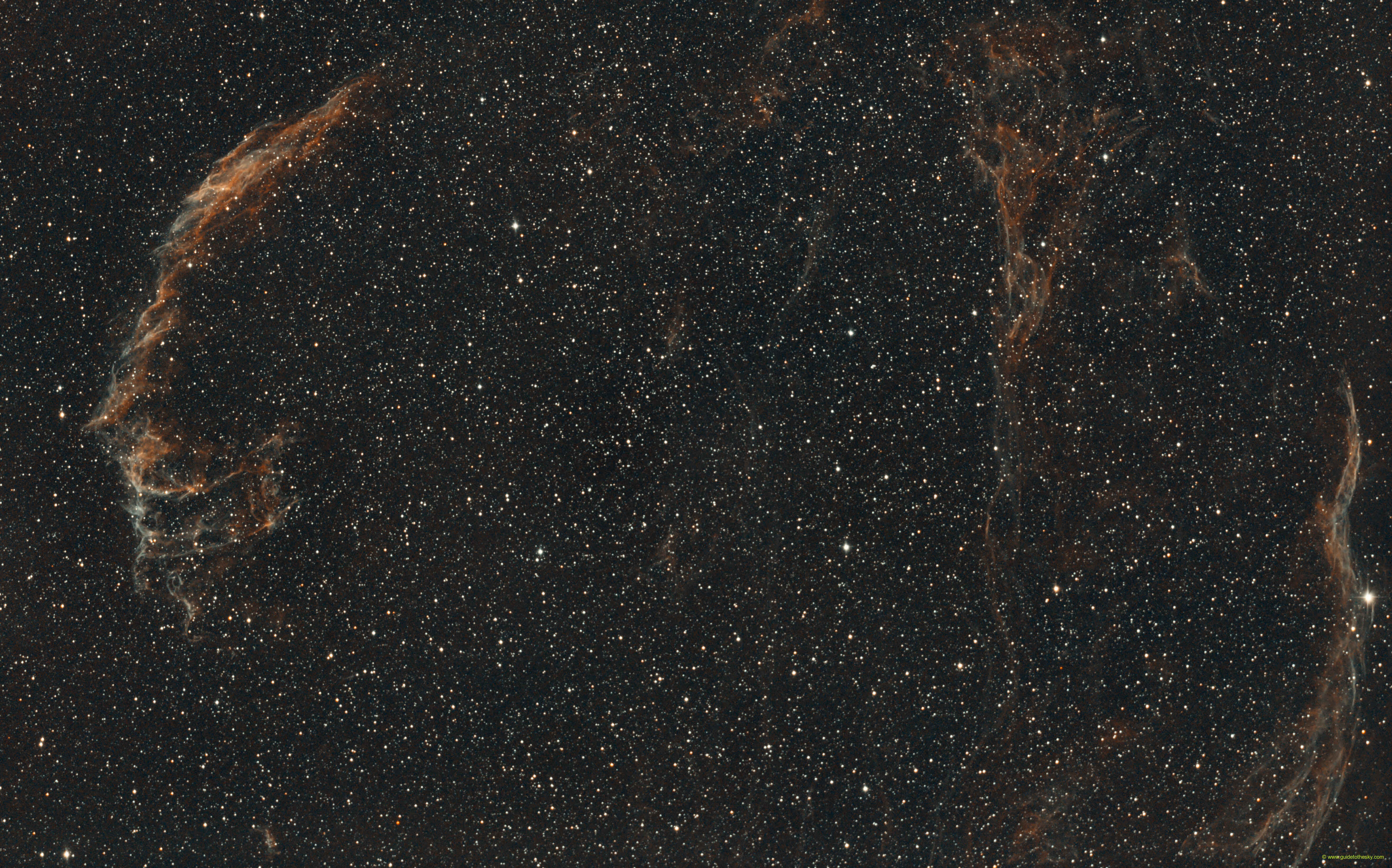Veil - Cygnus
Nebulosa del velo

Exp: 1h 14m
La Nebulosa del Velo o del encaje, es el remanente de una explosión de una supernova ocurrido hace unos 5000 años.
Abarca más de 3 grados en el firmamento y aparece separada en varias partes aunque su forma proncipal podemos decir que es más o menos esférica.
Los catálogos identifican varias partes en ella, entre otras: NGC 6992, NGC 6995, IC 1340 en su parte oriental y NGC 6960 en su parte occidental. En el centro podemos distinguir NGC 6974 NGC 6979.
Abarca más de 3 grados en el firmamento y aparece separada en varias partes aunque su forma proncipal podemos decir que es más o menos esférica.
Los catálogos identifican varias partes en ella, entre otras: NGC 6992, NGC 6995, IC 1340 en su parte oriental y NGC 6960 en su parte occidental. En el centro podemos distinguir NGC 6974 NGC 6979.
Veil - Nebulosa del velo - en la IA
The word "veil" can have several meanings, depending on the context. Here's a breakdown:
1. Literal Veil:
- Definition: A piece of thin material worn by women to cover all or part of the face and head.
- Purpose: Historically, veils have been worn for various reasons, including modesty, religious significance, fashion, and protection from the elements.
- Examples:
- Wedding veil: A white or ivory veil worn by a bride.
- Religious veil: Veils worn by some Muslim women (e.g., hijab, niqab, burqa), and by some nuns.
- Mourning veil: A dark veil worn during a period of mourning.
2. Figurative Veil:
- Definition: Something that conceals, obscures, or hides something else. It's a metaphorical barrier or covering.
- Examples:
- "A veil of secrecy surrounded the project." (The project was shrouded in secrecy.)
- "The fog created a veil over the city." (The fog obscured the city.)
- "She tried to hide her sadness behind a veil of cheerfulness." (She pretended to be happy to conceal her true feelings.)
- "The veil of ignorance" (A concept in political philosophy where people are asked to make decisions as if they don't know who they will be in society, promoting fairness.)
3. Verb Form:
- Definition: To cover with or as if with a veil; to conceal or obscure.
- Examples:
- "The mountains were veiled in mist." (The mist covered the mountains.)
- "She veiled her face from the camera." (She covered her face.)
- "The truth was veiled by lies and misinformation." (The truth was obscured.)
Possible Connotations:
- Mystery: Veils often create a sense of mystery or intrigue, as they partially hide what is underneath.
- Modesty/Purity: In some cultures and contexts, veils symbolize modesty and purity.
- Oppression/Restriction: In other contexts, particularly concerning certain types of religious veils, they can be seen as symbols of oppression or restriction of women's freedom.
- Protection: Veils can offer protection from the elements (sun, wind, dust) or even from unwanted attention.
In summary, "veil" is a multifaceted word with both literal and figurative meanings. Its significance and connotations depend heavily on the cultural, historical, and individual context in which it is used.
Más información sobre Veil en NASA/IPAC.
Mapa alrededor de Veil
Otros identificadores de Veil:

